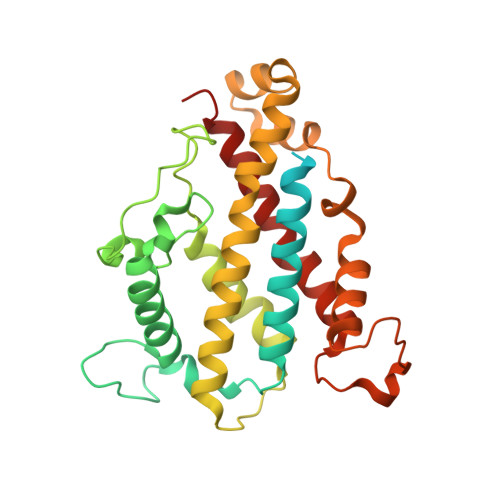Evolution of allosteric regulation in chorismate mutases from early plants.
Kroll, K., Holland, C.K., Starks, C.M., Jez, J.M.(2017) Biochem J 474: 3705-3717
- PubMed: 28963347
- DOI: https://doi.org/10.1042/BCJ20170549
- Primary Citation of Related Structures:
5W6Y - PubMed Abstract:
Plants, fungi, and bacteria synthesize the aromatic amino acids: l-phenylalanine, l-tyrosine, and l-tryptophan. Chorismate mutase catalyzes the branch point reaction of phenylalanine and tyrosine biosynthesis to generate prephenate. In Arabidopsis thaliana , there are two plastid-localized chorismate mutases that are allosterically regulated (AtCM1 and AtCM3) and one cytosolic isoform (AtCM2) that is unregulated. Previous analysis of plant chorismate mutases suggested that the enzymes from early plants (i.e. bryophytes/moss, lycophytes, and basal angiosperms) formed a clade distinct from the isoforms found in flowering plants; however, no biochemical information on these enzymes is available. To understand the evolution of allosteric regulation in plant chorismate mutases, we analyzed a basal lineage of plant enzymes homologous to AtCM1 based on sequence similarity. The chorismate mutases from the moss/bryophyte Physcomitrella patens (PpCM1 and PpCM2), the lycophyte Selaginella moellendorffii (SmCM), and the basal angiosperm Amborella trichopoda (AmtCM1 and AmtCM2) were characterized biochemically. Tryptophan was a positive effector for each of the five enzymes examined. Histidine was a weak positive effector for PpCM1 and AmtCM1. Neither tyrosine nor phenylalanine altered the activity of SmCM; however, tyrosine was a negative regulator of the other four enzymes. Phenylalanine down-regulates both moss enzymes and AmtCM2. The 2.0 Å X-ray crystal structure of PpCM1 in complex with the tryptophan identified the allosteric effector site and reveals structural differences between the R- (more active) and T-state (less active) forms of plant chorismate mutases. Molecular insight into the basal plant chorismate mutases guides our understanding of the evolution of allosteric regulation in these enzymes.
- Department of Biology, Washington University in St. Louis, St. Louis, MO 63130, U.S.A.
Organizational Affiliation:


















